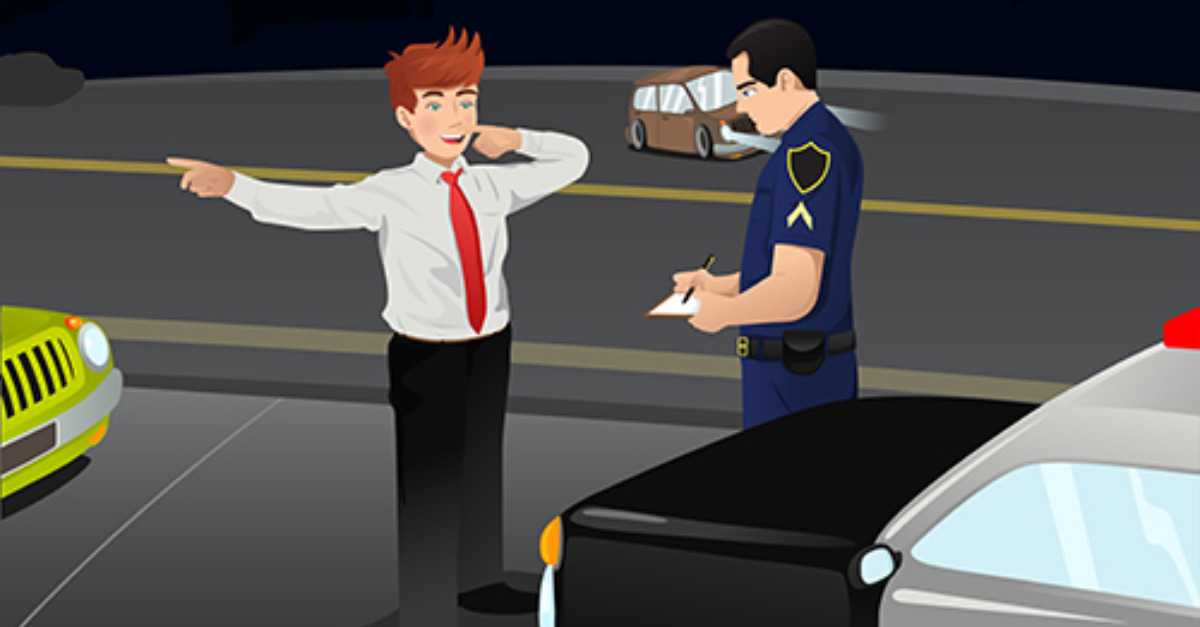DUI: The Police Gave Me Roadside Tests: What do they Mean?
Many of my clients, and their families, report to me at the first meeting that the police gave them “tests” at the roadside. They have little or no idea what these tests are about. But often, my client swears that she “passed” or at least thought she did well on these tests . Today I’m going to talk a little bit about the first of these roadside tests given thousands of times a year here in Tucson, what they mean to you, and why sober people routinely fail them.
The “Eye” Test
Police are trained to administer a test for “horizontal gaze nystagmus” (HGN in police lingo) test. It’s a familiar test: Police have a person stand arms at their sides with their feet together, and follow a “stimulus” invariable a pen or a penlight without moving their heads.
They move the pen left to right and right to left and up and down a sum total of about ten times.
My clients seldom understand what the police are looking for. And what the piece of evidence means.
Understand, first, that the police version horizontal gaze nystagmus test is really a dumbed down version of a common neurological test that every registered nurse, nurse practitioner, physician’s assistant, and physician is trained to give during almost all basic neurological exams. If you’ve ever received a concussion in a hockey game, and went to Urgent Care, you’ve received this test.
In my very first years of private practice I once represented a nurse practitioner who kept insisting to me that the officer gave her the HGN test completely wrong. At first I was slow to fully believe her. Or even understand.
So she brought in a colleague of hers who was a neurological nurse practitioner and they both showed me how it was done, tested me, and explained in medical detail the meaning and limits of the test.
Then my client’s friend testified about HGN to the jury at trial and proved that the officer either had no idea what he was doing, and manipulated the test to “recruit” the results he wanted, or was confabulating.
We won that case, hands down—not guiltys all around–and that same nurse practitioner became my long term HGN expert, serving as a consultant and jury witness in dozens of cases over two decades. We remain fast friends to this day I have her cell number memorized, and still speak to her almost every week.
But what I want to explain to you today, is the most important thing I learned from her and her colleague on that early case, is that those nurses and doctors are looking for is an involuntary shudder in your eye muscles as you move your eyes from left to right. It can be an indicator of neurological problems. You can’t control it.
But police have a different agenda. They try to use the test, often improperly, to show you are drunk, or have at least drank a great deal of alcohol. In fact I learned from the nurses that police can actually purposely “recruit” the very nystagmus they are looking for. Sort of like when police pull right up on your tail with their brights on, and then claim you “weaved” or “slowed suddenly to justify stopping you —in other words, the police can manipulate your eye to do they what, and then claim it as evidence against you. They do it in two basic ways. For one, they can do this by holding the “stimulus” beyond “maximum deviation”—meaning in lay terms, forcing you to move your eye to the further than you can comfortably do. And hold it there. Try it on a friend. If you go too far it is uncomfortable and cause exactly the nystagmus the police claim to be looking for.
In the world of medicine and neurology this is known as “end-point” nystagmus. In the world of police it is known as “nystagmus at maximum deviation.”
Second, my client and her neurological nurse practitioner friend taught me that police can recruit nystagmus by coaxing the eye to move too fast left to right—in other words if police want to they can move their pen too quickly, and then claim they saw your eyeball shudder.
There was a period of time where some prosecutors in Arizona asked the court to order that my client submit to an “in court” HGN on the day of trial.
I found my friend and her colleagues incredibly helpful during those trials. Often the judge would order my client and the officer to go in the judge’s hallway out of the purview of the jury. Then the police officer would “administer” the eye test, again, and then invariably testify that now, on the day of trial there were suspiciously “no cues” while on the night of arrest there were six.
But my nurse practitioner witness would watch the officer give the in-court test, and then often testify that the officer did it wrong (again).
This testimony really bothered prosecutors for a time and they did their best to try to put a stop to it. Ultimately, their solution was that for the most part they gave up on “in court” HGN.
Remember then that police like to use this HGN eye test, on you, or their version of it, to show that you have alcohol in your system and justify arresting you.
Many will give you the test even if you’ve just been in a car crash. I’ve actually had cases where they do it at the hospital, where my clients are transported to the hospital on a gurney, with blood dripping from their heads.
Police like to testify to the effect that their version of the horizontal gaze nystagmus test virtually fail proof. They like to testify that it shows a “neurological impairment one cause of which can be alcohol.” And they invariably testify that it looks like “a windshield wiper on a dry windshield.”
Note that the National Highway Traffic Safety Administration (NHTSA) has approved the test. In Arizona all officers must be ostensibly trained and qualified to give the test, and must keep a “log” of each test they give.
But in my view the standards and proficiency are at times deplorable. For one, I’ve never heard of a single officer failing. For another , police in Arizona now use the HGN test to “predict” if a person is “over” or “under” a .08 BAC. But NHTSA had originally “correlated” the exact same HGN test results with being over a .10, but then the legal limit in Arizona dropped to a .08, and the test was then, without any modification “validated” at the lower standard. This doesn’t in my view exactly make sense.
I hope this short article has given you some indication about police roadside eye tests. We’ll talk again soon. –MH
Recommended Articles

Driving under the influence (DUI) is a serious crime in Arizona. If you have been arrested for DUI, it is important to understand your legal rights.

This blog will address what you can do to win a DUI case for parked cars and how to avoid, hopefully even getting charged.

The Supreme Court in a 9-0 opinion held that when a minor offense alone is involved, police officers can't enter the home without a warrant.

First, let’s figure out what kind of DUI it is. They’re usually misdemeanors unless there’s been an accident.

Today we’re going to talk about parked cars. Police sometimes approach you when you’ve legally parked a vehicle and are using it as a stationary shelter.

About Michael Harwin
Michael’s skill and experience have been recognized repeatedly. He holds an A-V 5/5 preeminent rating by Martindale Hubbell. He has been named one of the top lawyers in Arizona by Southwest Superlawyers, and one of the best lawyers in Tucson by Tucson Lifestyle Magazine. He also has been named one of the best lawyers in the United States by BestofUS.com , and given the highest rating possible by AVVO, 10/10 Superb. Amazon Books



